Plumbing
Tank Fills
Since there is only one deck fill, I split the incoming line under the galley using bronze tees and valves to direct fuel to the desired tank. The hose on the left services tank four, the other is daisy chained to tanks three, two, and one.
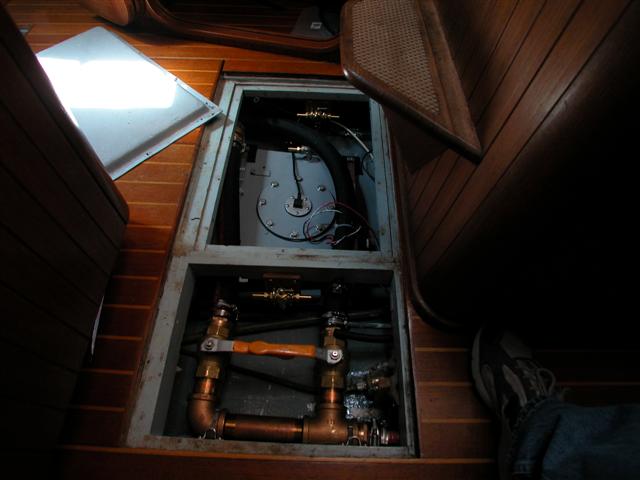
Deck fill hose split under galley. Bronze and brass.
When filling the first three tanks, all valves in-line are opened. The tanks fill in order from tank one to tank three. I close off the valves between tanks as they fill.
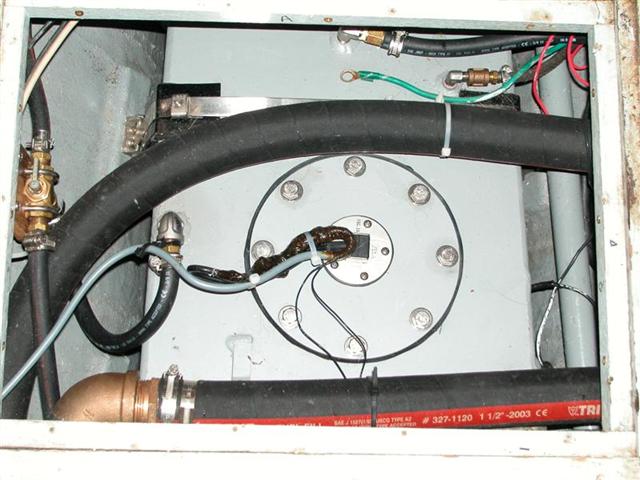
Day tank, tank fills are routed over the day tank.
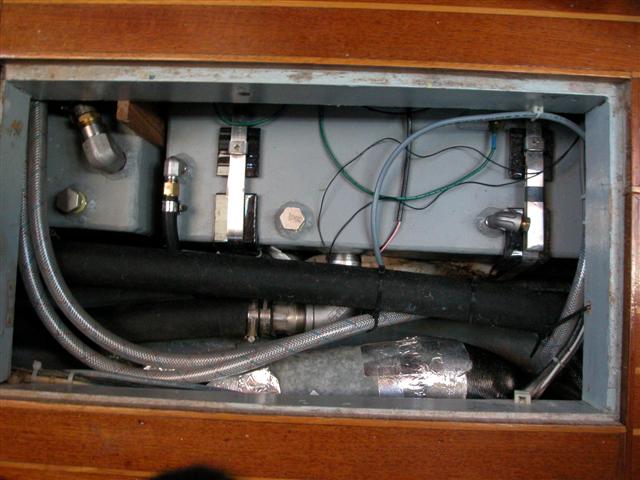
Tank number four
Note the water hose tie-wrapped to the fuel line above. Using a second tie-wrap between the two hoses creates a standoff, preventing chafe between the two. This works very well anywhere a hose comes in contact with something harder than itself.
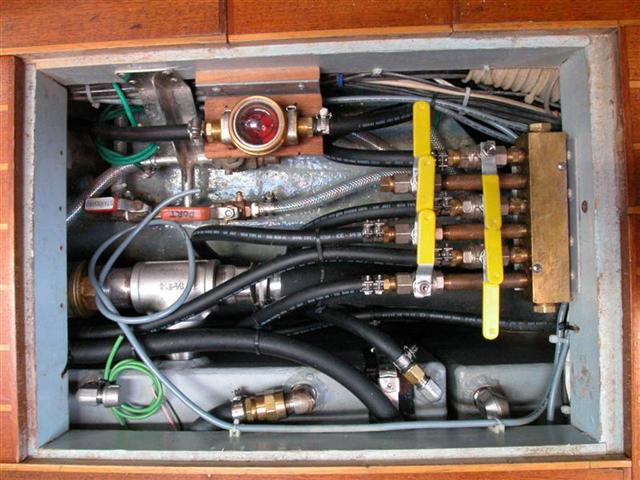
Alongside tanks three and four. Water manifold, fuel manifold, sight indicator for fuel flow.
The fuel fill hoses and fittings took up most of the space alongside the tanks. All of these hoses are secured to prevent chafe using tie-wraps. Transferring fuel involves opening one of the four bottom valves corresponding to one of the storage tanks along with the top valve which goes to the pump. Starting the pump will transfer fuel
I originally planned a second manifold to direct the output of the pump. This would have allowed fuel transfers in any direction and, once a Racor filter is added to the pump circuit, would provide fuel polishing for any tank simply by opening valves. Given the complexity already existing with five fuel tanks, this manifold was omitted. If polishing ever becomes necessary I will temporarilty re-plumb the pump outlet to the contaminated tank, a half hour job.
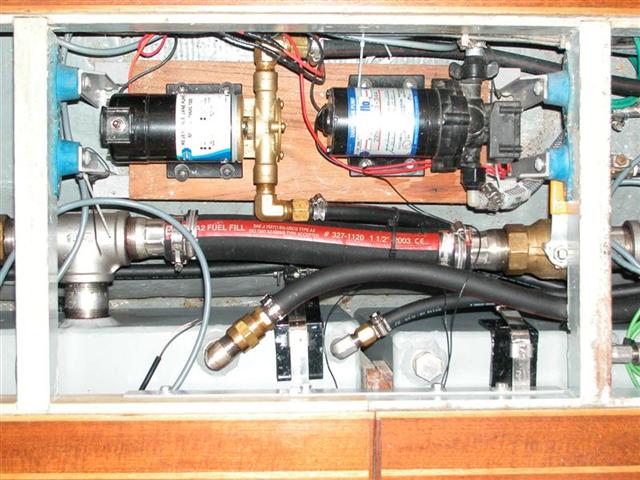
The transfer pump and water pump installation.
The pumps above were mounted on a steel and teak frame that was attached to the floor using isolation mounts.
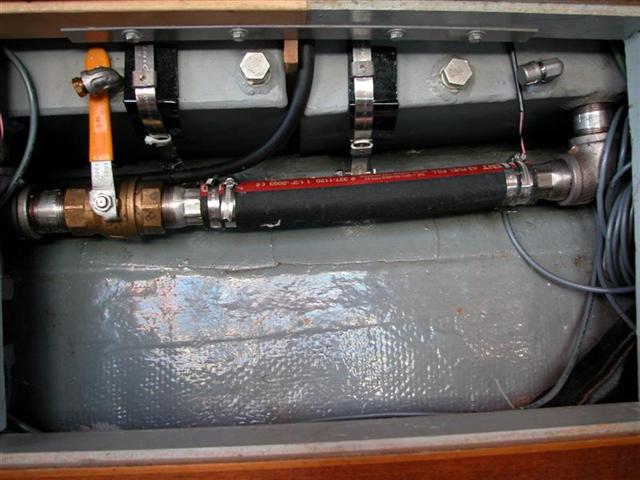
Along side tank number two is the only place we preserved storage.
The capped fittings above are the return lines for tanks one and two. These were capped when the second manifold was eliminated.
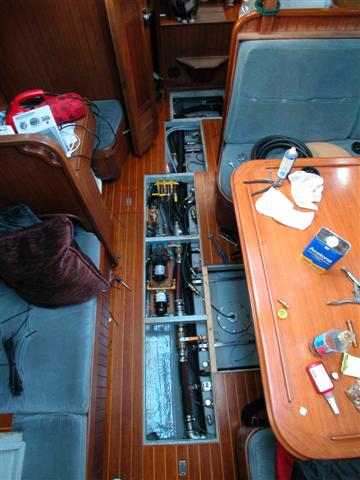
All tanks installed and plumbing complete.
Forward to Final Thoughts Page